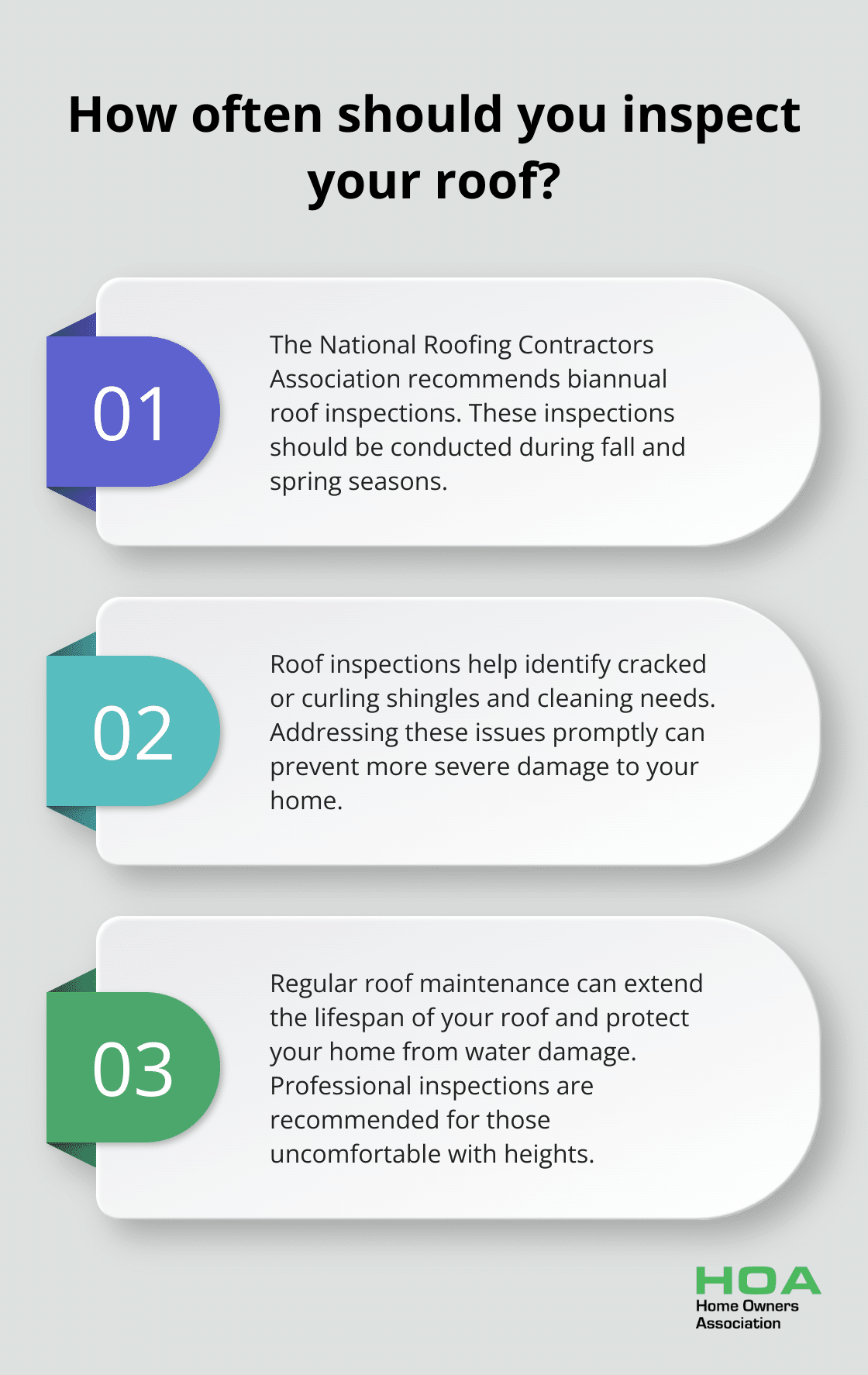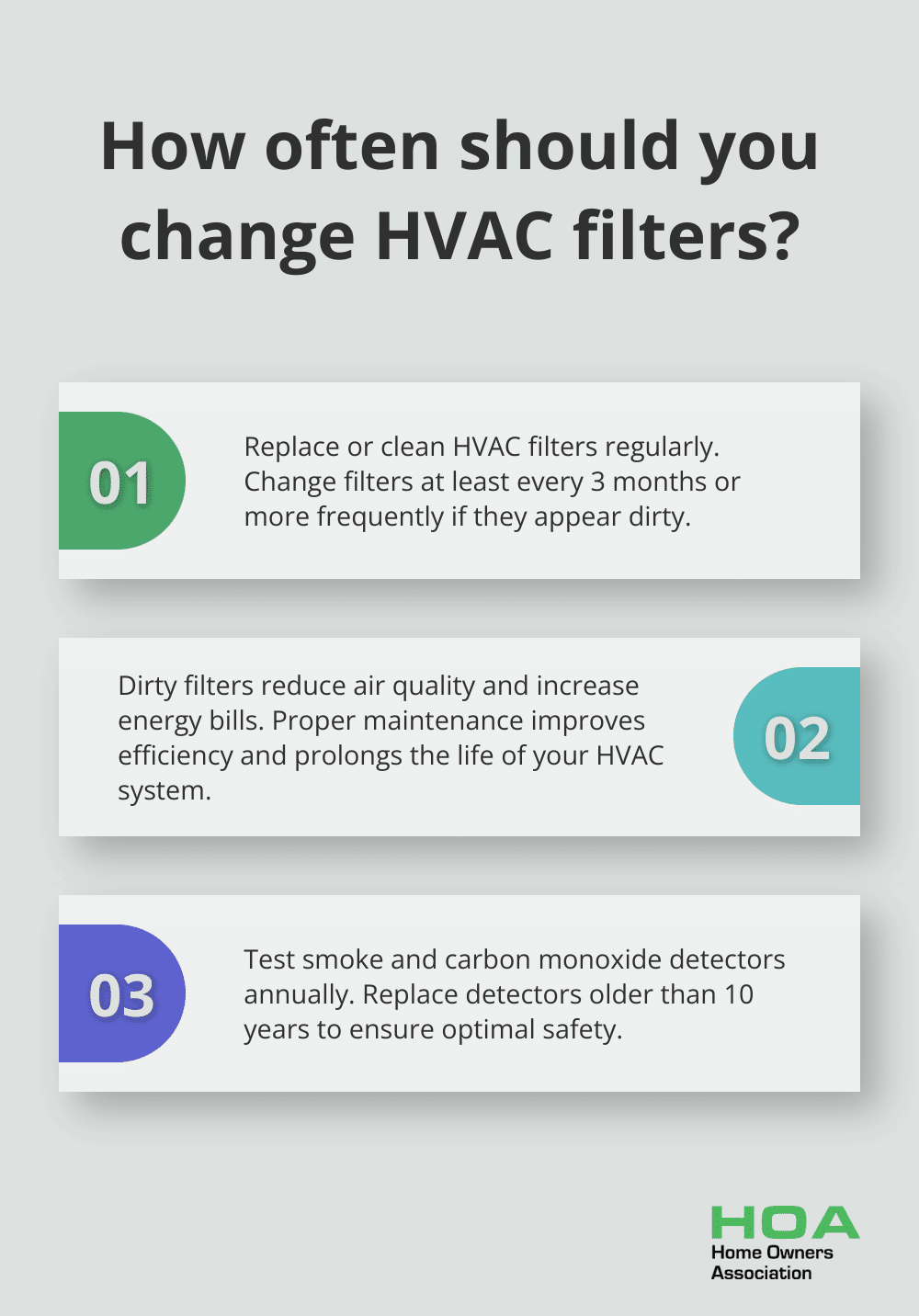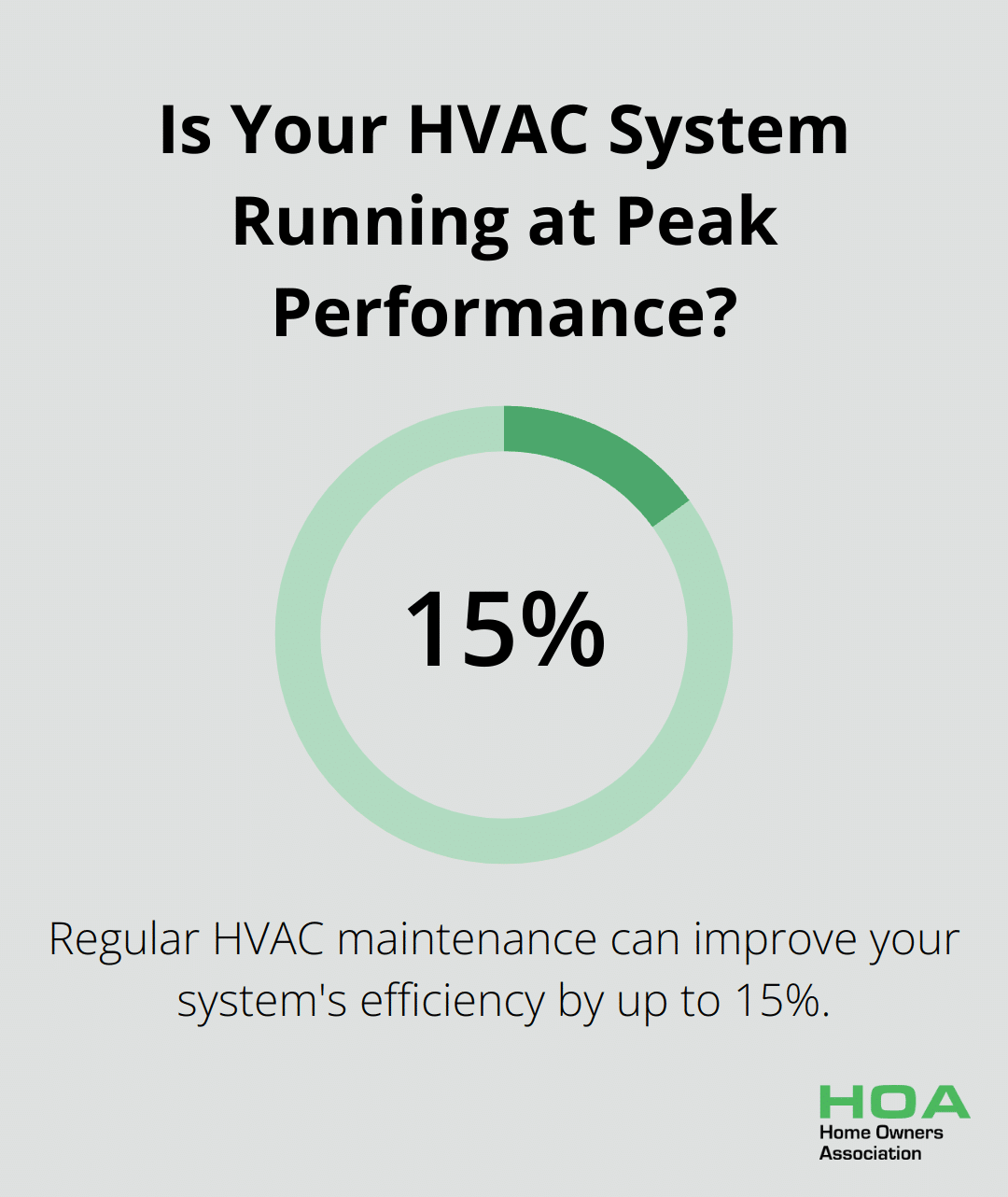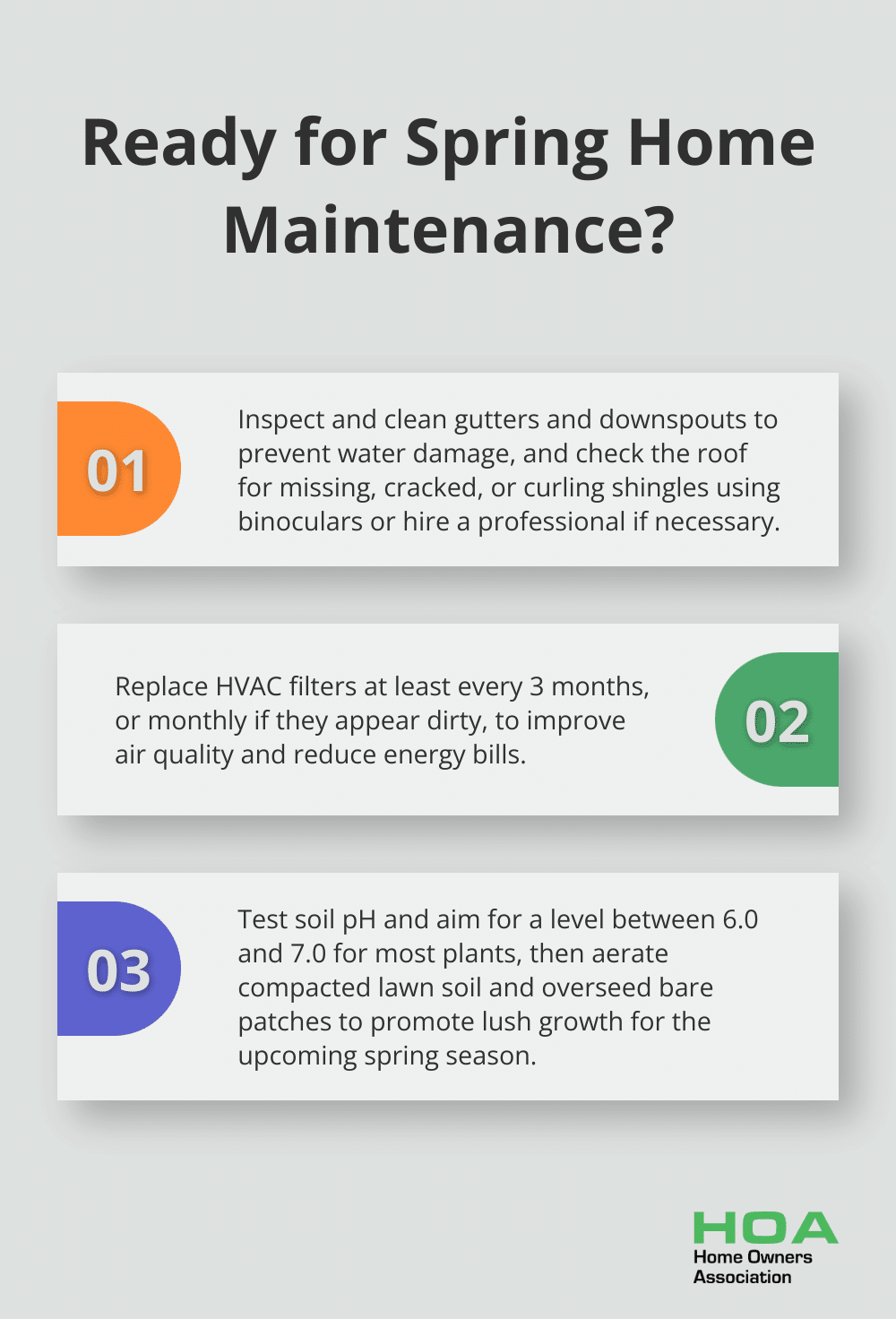
As the chill of winter begins to fade, it’s time to prepare our homes for the upcoming spring season. Late winter home maintenance is a critical step in protecting your property and ensuring its longevity.
At Home Owners Association, we’ve compiled a comprehensive guide to help you tackle essential tasks both inside and outside your home. From checking gutters to inspecting for water damage, our tips will set you up for a smooth transition into warmer months.
Exterior Checkup: Essential Late Winter Tasks
Gutter and Downspout Maintenance
As winter concludes, your home’s exterior requires a thorough inspection. Start with your gutters and downspouts. These components (often overlooked) play a vital role in your home’s water management system. Winter debris can clog these channels, potentially causing water damage. Remove all leaves, twigs, and other buildup to ensure proper water flow away from your home’s foundation.
Roof Inspection
Your roof deserves close attention after winter’s harsh conditions. Winter storms can damage or dislodge shingles, creating weak points in your home’s primary defense against the elements. Examine your roof for missing, cracked, or curling shingles. If you’re uncomfortable with heights, use binoculars for a ground-level inspection or hire a professional. The National Roofing Contractors Association recommends inspecting your roof during the fall and spring to check for cracked or curling shingles and cleaning.
Wall Assessment
Don’t neglect your home’s exterior walls. Late winter provides an ideal opportunity to identify cracks or peeling paint that may have developed during colder months. Address these issues promptly to prevent water infiltration and more severe structural problems. The U.S. Department of Housing and Urban Development emphasizes the importance of sealing even small cracks to avoid water damage.
Landscape Maintenance
Assess the trees and shrubs surrounding your property. Overgrown branches pose risks during spring storms. Trim any limbs touching or hanging over your roof or siding. The Arbor Day Foundation suggests planting small trees at least 8 to 10 feet from a wall or 6 to 8 feet from a corner of your home. This practice reduces damage risk and discourages pests.

Tackling these exterior maintenance tasks now sets your home up for a smooth transition into spring. Proactive care saves significant time and money in the long run. If you’re uncertain about any aspect of your home’s exterior maintenance, consider reaching out to a professional organization like Home Owners Association. Their team of experts (based in Melbourne, Australia) stands ready to provide guidance and support for all your home maintenance needs.
Now, let’s move on to the interior of your home, where a different set of late winter tasks awaits your attention.
Inside Job: Late Winter Interior Maintenance
Safety First: Detector Check
Start your interior maintenance with a safety sweep. Test all smoke and carbon monoxide detectors in your home. Smoke alarms with any other type of battery need a new battery at least once a year. If your detectors are more than 10 years old, it’s time for a replacement. This simple task can protect your family’s lives.
Breathe Easy: HVAC Maintenance
Your heating, ventilation, and air conditioning (HVAC) system works overtime during winter. Now’s the time to show it some love. Replace or clean your HVAC filters. If the filter looks dirty after a month, change it. At a minimum, change the filter every 3 months. This action not only improves air quality but also reduces your energy bills.
Moisture Check: Spotting Water Damage
Winter’s harsh conditions can lead to sneaky water damage. Inspect your ceilings, walls, and basements for water stains, bubbling paint, or musty odors. These are telltale signs of water infiltration or mold growth. The Environmental Protection Agency warns that mold can start growing within 24 to 48 hours of water exposure. Address any issues immediately to prevent further damage and potential health risks.
Draft Detection: Window and Door Inspection
Drafty windows and doors can significantly impact your home’s energy efficiency. Conduct a thorough inspection of all windows and doors. Look for visible gaps, feel for air leaks, and check the condition of weather stripping and caulking. Addressing these issues now can lead to substantial energy savings in the coming months.

As we wrap up our interior maintenance tasks, it’s time to shift our focus to preparing your home for the upcoming spring season. The next section will guide you through essential steps to ensure your property is ready for warmer weather and new growth.
Spring Prep: Transitioning Your Home
HVAC Tune-Up Time
Your heating system worked hard all winter. Now, it’s time to prepare your cooling system for the heat ahead. Schedule a professional HVAC maintenance appointment. The U.S. Department of Energy estimates that regular maintenance can improve your system’s efficiency by up to 15% (saving you money and extending equipment life).
Winter Gear Storage
Clear out your living spaces by properly storing winter equipment. Clean and dry snow blowers before storage to prevent rust. Drain fuel from gas-powered equipment or add a fuel stabilizer. For winter clothing and bedding, ensure everything is clean and dry before you pack it away in airtight containers. This prevents musty odors and protects against pests.
Garden and Lawn Revival
Spring is the perfect time to revitalize your outdoor spaces. Start by clearing away any remaining debris from winter. Test your soil pH and add amendments as needed. A pH between 6.0 and 7.0 is suitable for most plants. Plan your garden layout and start seeds indoors for early planting. For your lawn, aerate if the soil is compacted and overseed bare patches to promote lush growth.
Professional Assistance
If you’re unsure about any aspect of home maintenance or need expert help, consider reaching out to a professional organization. Home Owners Association in Melbourne, Australia, offers expert guidance and resources to ensure your home is in top shape for the season ahead. Their team (with over 40 years of experience) can provide personalized advice tailored to Melbourne’s unique climate and housing market.
Planning for Renovations
Spring is an ideal time to plan and execute home improvement projects. Take stock of any areas in your home that need attention. Create a prioritized list of renovations or repairs you want to tackle. Research local contractors and gather quotes for larger projects. If you’re a member of Home Owners Association, you can access their network of trusted professionals and potentially benefit from trade pricing on materials.

Final Thoughts
Late winter home maintenance protects your property’s value and ensures year-round comfort. Exterior checks, interior tasks, and proactive care prevent small issues from becoming major problems. Our guide equips you with essential steps to transition smoothly into spring and avoid costly future repairs.

Home maintenance doesn’t have to be a solo endeavor. We at Home Owners Association support Melbourne homeowners with expert guidance and resources. Our team offers access to trade pricing on materials and a network of trusted professionals for your home improvement projects.
Your late winter home maintenance efforts create a safer, more efficient, and comfortable living space. Take pride in the work you’ve done to protect and enhance your valuable asset. As warmer months approach, you can rest easy knowing your home is well-prepared for the season ahead.





